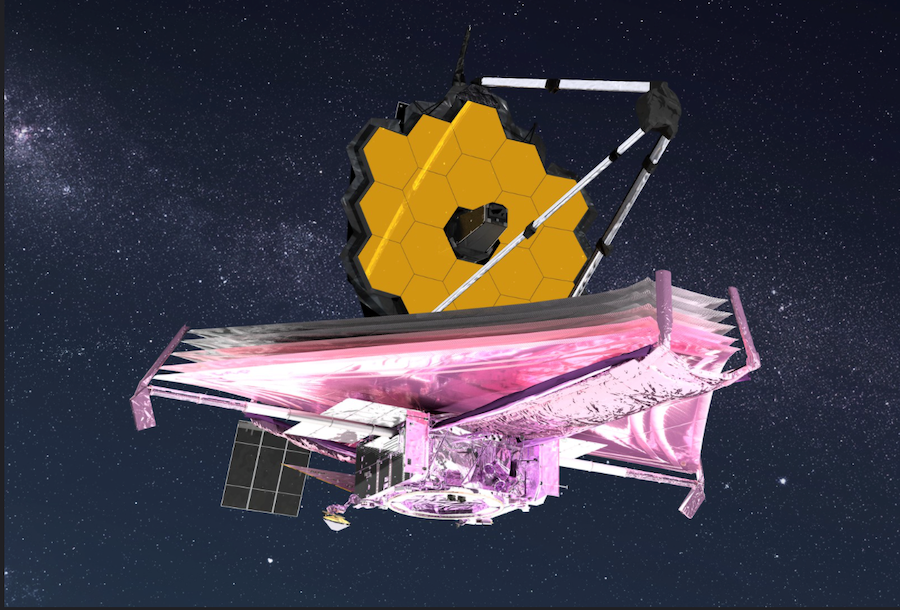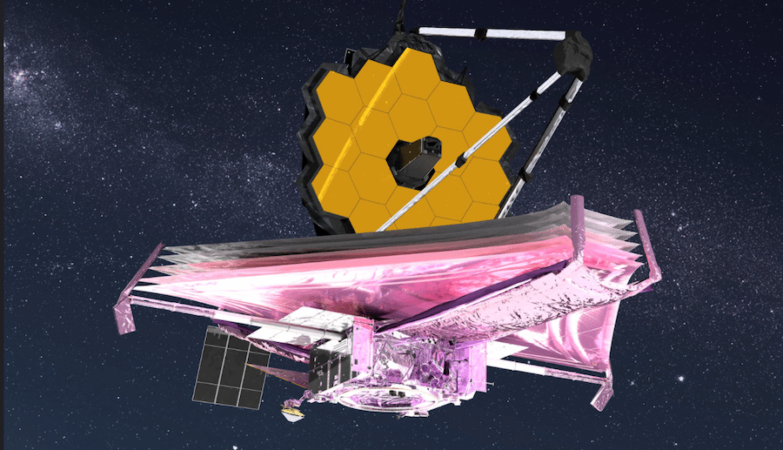NASA GSFC / CIL / Adriana Manrique Gutierrez
Artist’s impression of the James Webb Space Telescope in space
The James Webb Space Telescope has discovered the four most distant galaxies ever observed, one of which formed just 320 million years after the Big Bang, when the universe was still in its infancy.
James Webb has unleashed a torrent of scientific discoveries since entering service last year, and he’s looking farther than ever ends of the universe — which also means looking back in time, she said Science alert.
By the time the light from the most distant galaxies reaches Earth, it has already been stretched by the expansion of the universe and shifted into the infrared region of the light spectrum.
The James Webb NIRCam instrument has an unprecedented ability to detect this infrared light, and it is rapidly discovering a collection of galaxies never seen before.
In two studies published in natural astronomyAstronomers have revealed that they have “unequivocally discovered” the four most distant galaxies ever observed. These dates from 300 to 500 million years after the Big Bangwhen the universe was only 2% of its current age.
This means that the galaxies are from the “reionization epoch,” the period when the first stars are thought to have appeared. This era arose after the cosmic dark age created by the Big Bang.
The most distant galaxy — called JADES-GS-z13-0 — formed 320 million years after the Big Bang, said Stéphane Charlot, a researcher at the Astrophysical Institute in Paris and one of the authors of the two new studies. He said that this is the largest distance that astronomers have ever observed.
James Webb also confirmed the existence of JADES-GS-z10-0, which dates back to 450 million years after the Big Bang and which previously seen by the Hubble Space Telescope.
Stéphane Charlot noted that all four galaxies are “extremely low mass”, weighing about one hundred million solar masses.
He continued that the galaxies are “very active in forming stars in proportion to their mass,” adding that these stars were forming “at the same rate as the Milky Way,” Speed that was “so amazing early in the universe”. He noted that galaxies are also “very poor in minerals”.
This data is consistent with the Standard Model of cosmology, the best scientific understanding of how the universe works, which says that the closer we get to the Big Bang, the less time there is for such minerals to form.
However, in February, the discovery of six massive galaxies 500 to 700 million years after the Big Bang led some astronomers to question the Standard Model. These galaxies, also noted by James Webb, were larger than previously thought shortly after the birth of the universe.
Peter van Dokkum, a Yale astronomer who was not involved in the latest investigations, welcomed the confirmation of the four newly discovered galaxies.
Borders move almost every month.He commented, noting that there is now “only 300 million years of unexplored history of the universe between these galaxies and the Big Bang”.
He added that the Webb telescope spotted possible galaxies closer to the Big Bang, but these galaxies have not yet been confirmed.

“Coffee trailblazer. Social media ninja. Unapologetic web guru. Friendly music fan. Alcohol fanatic.”


